A week in the shop
Published 24 Feb 2019
Now that The Clydesdale is happily with its owner, I’ve been turning my attention to the two other guitars I have, one finished, one needing finished.
First up is The Orange Surf, which is a completed offset guitar that I made whilst testing out parts for The Clydesdale, but deliberately made with a totally different character to its sibling to stand them apart. The Clydesdale is a bit of a rock monster, whereas The Orange Surf is channelling a custom shop mentality to that classic original surf guitar.
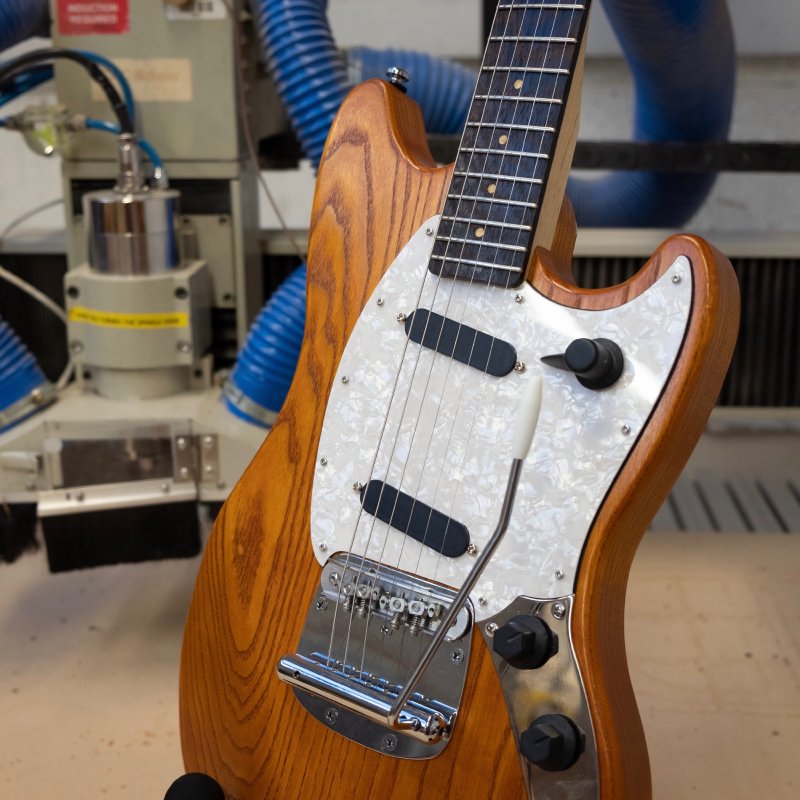
Tonally we vintage Mustang appointments, but made with the best parts I could get: we have House of Tone’s Bronco single-coil pickups for a hand wound take on that classic Mustang sound, and a dynamic vibrato system upgraded with a Mastery Bridge. This lets you recreate those classic surf tones with the vibrato wobble - just add an amp with spring reverb (or your favour pedal equivalent) to complete the sound.
The classic pickup selector switches on the original Mustang are not to my taste, so I designed something totally custom here, using a 3D printed control that uses a rotary switch to give options: neck, bridge, and then both in series or parallel. I really wanted a selector that was nicely ergonomic, and this you can flick with your thumb nicely whilst playing, without it being in the way when strumming.
Visually I wanted this guitar to be vibrant like the sounds. I went with a light Swamp Ash body, which has a beautiful bright orange finish, paired with a sparkly white pearloid pick guard. The neck is maple with a wenge fretboard, and has classic style clay dot inlays. You can see all this on the video I made of it:
This guitar is for sale now for £1500 plus postage. I plan on listing it on Reverb.com once I’ve got through signing up as a company there, but feel free to get in touch directly if you’d like to buy this beauty.
The second guitar left over from The Clydesdale build era is what I’ve been calling The Recovery Offset (though needs a better name), which is constructed from both a neck and a body that the CNC Router tried to destroy: on the neck the CNC ramped the bit into the wood when it shouldn’t, shattering the bit and taking a chunk of the neck with it, and on the body it decided to just cut into the upper horn. Both bits I’d since patched, but clearly they couldn’t be used on the commission, and as such they’ve sat to one side for a good while.
But, as a way of getting back to actual guitar building after all this time fighting the machines, I decided to take these pieces and make a guitar from them at last. Part of why I’d not done this before now was lack of time, but it was also I lacked a vision for this build: although I had these parts I knew I should use, I didn’t really have a goal in mind. So, this week I did a little planning, and now I have a target in my head, and I started moving things forward.
This guitar is going to be the little punk guitar that the machines tried to kill but survived. Because the body was routed for The Clydesdale, it’ll similarly have a hard tail bridge with strings running through the body, but to find a different space for the guitar from the other offsets I’ve made, I’ll go with single-coil pickups with rotary selection like The Orange Surf.
Original I’d thought that I’d paint the body to hide the scar of where I had to fix it, but no, I’ve decided I’m not going to hide that. The neck has a patch in it I can’t readily hide, so the body will similarly wear its scar with pride. The patches I apply have fixed the material, meaning they play and feel just fine, but the visible scars will be there to show that this guitar survived the machine’s attempt to make it go away; it’s going to be a punk guitar Sarah Conner :)
Colour wise, I’m going for something bold. Blue body, red marble pick-guard, and both the neck and fretboard are maple. It’s a look partly inspired by the lovely blue/maple PRS SE that Kris, the other guitarist in my brother’s band IKARI has, which I really like the visual aesthetic of.
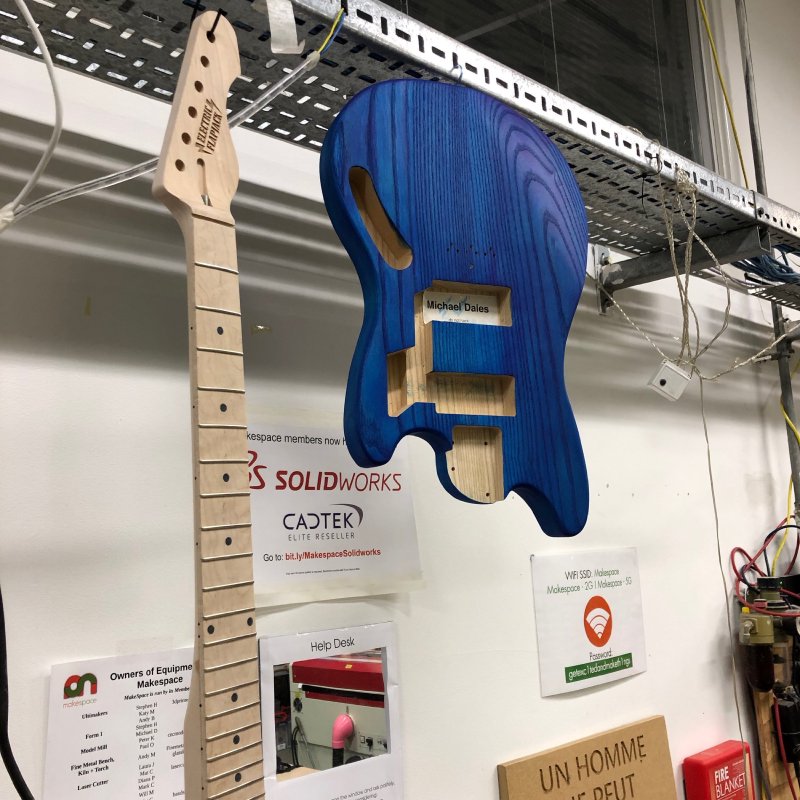
It’s early days, but now that I have a direction I can get started. This week I finish the fretwork on the neck, and gave it a good sand down, and the body I sanded all the way up to 2000 grit and then started the staining process. It feels good to be building again.
Speaking of IKARI, I’m super proud of my brother and his bandmates who have released the first single, No Longer Human, from their upcoming album Shapes & Sounds. As with any project, they’ve had their struggles, so it’s great to see the fruits of their labours starting to come through with this catchy wee bit of rock. Better yet, the video features the guitar I made for Tris :)
Their album, which was a kickstarter project last year, now has a release date of April 5th, and you can pre-order it from their website.
And similarly, speaking on the machine that tried to destroy so much of my work last year: this was also the week we finally gave the Makespace CNC Router a brain transplant. Adrian and I spent the entire of Saturday removing the old controller electronics and wiring in the new DM500 controller that we’d tested last month.
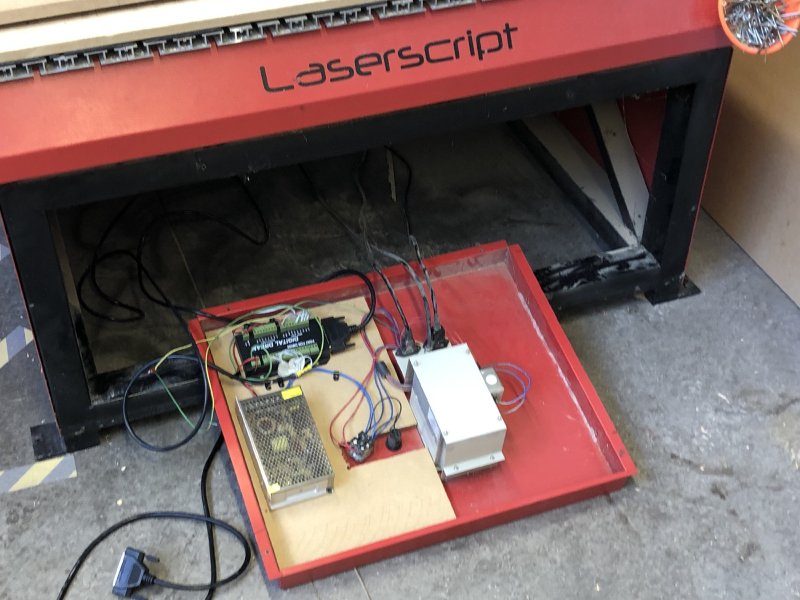
The DM500 isn’t perfect, but it’s definitely an improvement over what we had before. That said, in terms of will it be more trustworthy for cutting expensive bits of wood meant for guitars, only time will tell: we’ll just have to run lots of things through it to see how reliable it is. For now I’ll be at least testing my tool paths on cheaper wood before using expensive good, and probably do more with templates made on the CNC Router and then cut the actual wood with a hand router.
A few weeks ago I made a circuit up for a fuzz face pedal, and I’ve been meaning to make a case for that for a while, so this week I sat down and took a first pass at that. I made one in the past that was like a regular rectangle, but I had some ideas I wanted to try out to make it a bit more interesting. The first one of those was to have a rounded/sloped wooden top.
My initial idea was that I could 3D print the top and glue a veneer to it, but the common consensus at Makespace was that glue on ABS prints doesn’t work very well, so I decided to try a different tack and make it using the “living hinge” design, where you laser cut slats into wood to make it bendable. After a morning of learning, I had something like this:
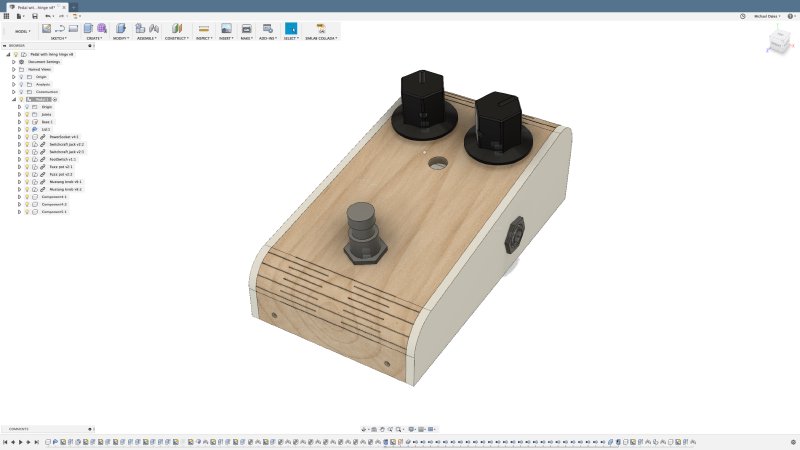
Fusion 360 doesn’t have some magic mode for making these hinges, but there is an excellent video tutorial on how to make them by one of their sales engineers, which you can also watch here. The bottom part is built fairly conventionally for Fusion 360, but the top part is modelled as sheet metal with custom bend radiuses, and then that model is unfolded and the lattice of slots applied. I definitely recommend the video if you want to learn more about the sheet metal mode in Fusion: even though I’ve made and had manufactured sheet metal parts in Fusion, I still learned some new things from this video.
Modelling done, I then made my first prototype in Makespace:
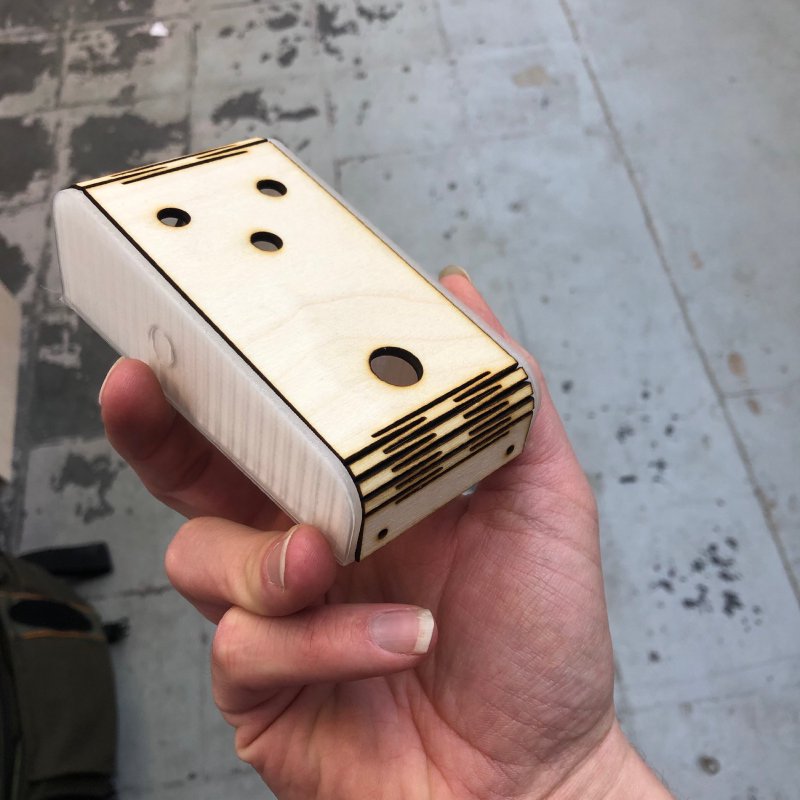
Not bad for literally the first 3D print of the base and laser cut of the top. In fact, it’s better than it seems, as that lid is friction fit without screws currently. The spacing for the lattice work I guessed at, so it was also pretty lucky. Incase anyone is trying this: I have a 12mm radius curve there, and to get things to fit I used a roughly 2mm spacing between lines on the curve.
I have a couple of things to tweak, but overall I’m very happy with the design. I’ve ordered a bunch of parts from Mouser to make the pedal (and to let me finish my switcher prototype), so with luck I’ll get this on my board in the near future.
On the topic of sheet metal and pedals, my pedalboard is still holding up well:
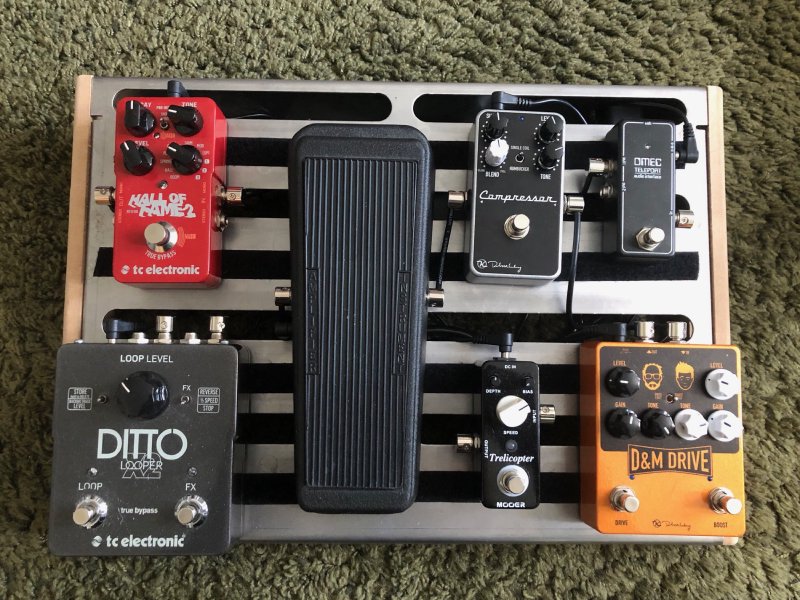
I’ve added a Keeley Compression Plus, as I’ve been trying to play more finger-style of late, and took it to a band practice/lesson session over at Rhinocorn Studios at the end of the week, which was a good demonstration of how nice the extra room provided by the ability to lay things out clear is: getting access to both the Compressor and the OMEC Teleport (which embarrassingly I was using as a kill switch rather than for anything fancy :) on the top row was not a problem whilst in mid-song panic.